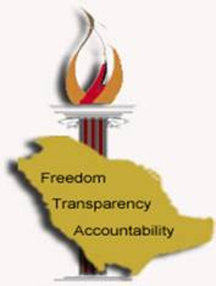CDHR Analysis: People from all kinds of political and ethnic background are asking why Arab autocracies and populations are not showing public support for the Palestinians during the carnage in Gaza. After decades of trumpeting their support for restoring “occupied Palestine” to the Palestinian people, the ruling Arab regimes have proven time and again that their overt pronouncements are not only misleading but contrary to their objectives as stated here. The Arab regimes’ (including the Hamas leadership) top priority is to rule for life at any cost, including eliminating their critics and suppressing peaceful pro-democracy movements, as amply demonstrated by the Saudi-led coalition of counterrevolutionary states to ensure that freedom of expression and democratic movements, akin to the 2010-2011 Arab Spring, never happen again.
The massive pan-Arab uprising of 2010-2011 was instigated by persistent political repression, lack of opportunities and by increasing numbers of 21st century-educated youth yearning for freedom of expression, accountability, transparency, and the right to participate in decisions that affect every aspect of their lives and future. Having realized that it’s either us or them, the privileged ruling Arab monocracies buried their differences and began to join forces to crush the enemy from within, the freedom and democracy activists. Despite the repressive Arab regimes’ self-serving declarations, they used the average Palestinian’s plight to divert their own voiceless subjects’ attention from their dire economic, political, and social sufferings to prevent potential domestic uprisings.
One underlying element common to all Middle Eastern conflicts is the centuries-old religious divide that all state and non-state players have used to justify branding others as the enemy that cannot be dealt with. Historical conflicts between Sunni and Shi’a Muslims began after Prophet Mohammed died in the 6th century. The bitter divide originated with a dispute over who should succeed Prophet Mohammed as leader of the Islamic faith he introduced. Even though the religious schism started 15 centuries ago, the fallout still pervades political and ethnic divides within Muslim communities worldwide.
For example, the Houthis and Hezbollah are off shoots of Shi’a Islam who are marginalized in Yemen and Lebanon, respectively. The Iranian theocracy took advantage of their misfortunes and began supporting and using them to expand its influence regionally and beyond. There are large marginalized and subjugated Shi’a populations in all Gulf Arab states, specifically Saudi Arabia and Bahrain, which could become threats to their oppressive Sunni regimes not only in the Gulf but regionally and elsewhere.
Combined with internal threats to the regimes due to religious differences and unresolved internal social, political, and economic challenges, the Arab regimes are facing unprecedented regional threats from formidable state and non-state players. While Iran is considered the major external threat to the Gulf Arab dynasties, other powerful regional states like Turkey and its supporters in some Arab countries also pose potential perils to the Gulf ruling families’ grip on power. Despite the Arab World’s advantages-larger land mass and populations, strategic locations, and vast economic resources- it is unable to defend itself against Israel, let alone any combination of domestic and external threats.
Notwithstanding the absolute Arab autocracies’ destabilising regional policies and violations of basic human rights, they have enjoyed democratic Western powers’ protection for decades, especially America’s. Now that the West is pivoting its attention toward threats from competitive superpowers in other parts of the world, the Arab regimes are courting the Israelis to defend them in return for normalizations of relations, lobbying for them in the West and, above all, for profitable business deals of which the Israelis will be the beneficiaries. Technologically, militarily, economically, politically, and scientifically, Israel is by far more advanced than all Arab countries. However, due to Israel’s size, lack of natural resources, manpower and dismal popularity in the region and beyond, it cannot protect the Arab regimes as the U.S. has for decades. On the other hand, Israel could provide the Arab regimes with some of the most advanced surveillance tools like Pegasus, AI Lavender and “Where’s Daddy” that are being used to track and kill suspected Hamas.
In summary, the lack of support from the Arab public and regimes for the trapped Palestinians in Gaza is due to the regimes’ heightened nervousness due to America’s shifting priorities. The Palestinian issue has long been a bargaining chip externally and domestically, a diversionary issue used by the Arab regimes to distract their publics’ attention from internal political repression, economic hardships, inequalities, corruption and religious intolerance. Now they are imploring the Israelis to shield them from rising domestic demands for changes that the regimes will not embark on voluntarily.


